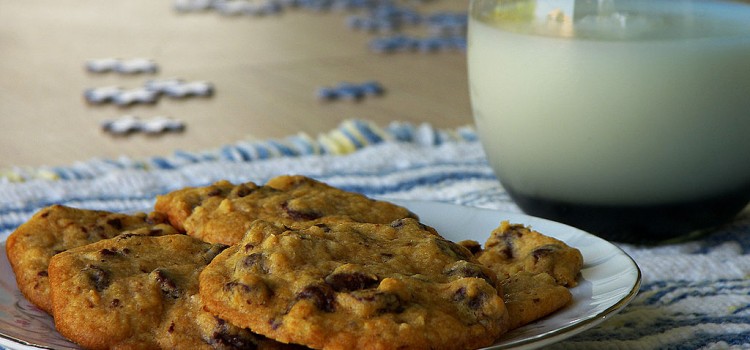Preparing recipes with breast milk is all the rage these days in the crunchy community, but its turning the stomachs of many skeptics. Does this fad have enough benefits and enough momentum to become an accepted practice in the breastfeeding community? Let’s take a look at how cow’s milk went from grossing out Americans to being a popular beverage.
Mainstream America has long been touting the benefits of breast milk from this large beast, and the origins of the mainstreaming of milk production aren’t exactly glorious. While consuming cow’s milk was accepted since ancient times, it wasn’t main stream until our grandparents were living.
In the early 19th Century, alcohol distilleries had a large by-product of swill, which are the remains of grains used by alcohol manufacturers. Wanting to capitalize on this, many distilleries opened neighboring dairy farms, using the swill to feed the cows. As you can imagine, the nutritional content of swill was not enough to produce quality milk. Add to this the low quality conditions of the dairies, and you get a breeding ground for typhoid and tuberculosis, causing infant mortality rates to skyrocket.
By 1917, the law required all raw milk to be pasteurized before sale to the public, removing pathogens, but also removing some nutritional benefits, as well as the human body’s ability to absorb and assimilate it for highest benefit, (although they didn’t realize it back then). Nonetheless, people were still afraid of cow’s milk, and human breast milk was the food of choice for infants, as it had been since the beginning of civilization. But, there was soon a shift.
In the late 1930s and 1940s, commercial marketing of cow’s milk began, and milk was introduced to the standard school lunch. This was an effort to boost America’s economy coming out of the Great Depression, and to provide wholesome, nutritious lunches to children. During this era, doctors discouraged women from breastfeeding, touting the benefits of cow’s milk formula for their babies. Breastfeeding mothers of this era were assumed to be low-class, dirty, and poor.
In the 1990s the now defunct “Food Pyramid” and the “Got Milk” advertising campaign further drilled into consumers’ heads the need for milk in the American Diet. Cow’s milk had gone from its sometimes germ-laden beginning to a less nutritious but benign popular beverage choice in the U.S.
Over time, breastfeeding once again gained popularity as mother’s discovered that their babies were not able to digest cow’s milk, and many were allergic to it!
Further study has shown that humans digestive systems, while able to digest and process a wide array of foods, often have trouble digesting cow’s milk. “Crunchy” moms who research this eventually grow amazed at the large amount of anecdotal evidence showing that human breast milk is much more digestible to humans of all ages, and has amazing healing properties, and has natural antibacterial properties, making pasteurization unnecessary.
As you can see, this is an argument for baking and cooking with breast milk. When you learn about the history of cow’s milk, and consider how strange it really is to be consuming the breast excretions of an animal, it suddenly makes sense that human milk may be a fine alternative!
So, if you go to a crunchy friend’s house, and she says, “By the way, I put breast milk in your dessert.” You can reply with a confident “Thank you!”
Do you have a breast milk recipe you’d like to share? Leave a comment.
Would you like to read a follow-up article touting all the benefits and possible uses of human breast milk? Leave a comment.
[Image Attribution: By dno1967 (originally posted to Flickr as B.C. M & C C Cs) [CC-BY-2.0], via Wikimedia Commons]

